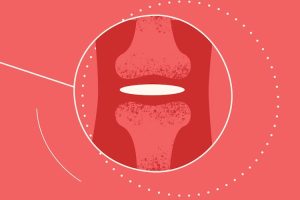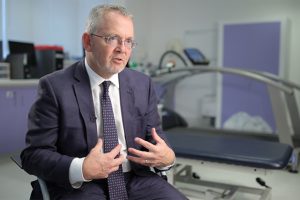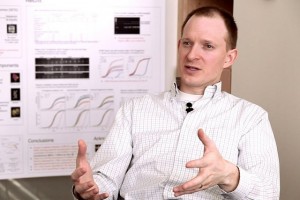Functional Joint Regeneration in Frogs
Researchers show for the first time that frogs can regenerate a functional leg
I think, causes of Aging have to be one of the greatest questions of biomedical science at the moment. They aren’t really known, so I can give you some very broad history of ideas about causes of aging and what’s been going on in the aging field but this is very much a matter of my own perspective. I don’t think there’s a consensus about this, but I think what I’m going to say won’t be mad or anything either.
So over the years there’s been a kind of a dominant notion about the nature of aging, a dominant thought about biology of aging that guided experimental approaches and hypothesis generation. This is the idea that living organisms are complex systems and like other complex systems in the nonliving world, like machinery and so on, they wear out over time. Complex things wear out. When you look at a person or animals when they become senescent it kind of looks like they’re worn out. With the development of modern biochemistry and molecular biology and the tendency to look for ultimate answers at the molecular level arose this notion that maybe aging was the result of a kind of wear and tear at the level of molecular processes, like molecular damage. There are many different theories about molecular damage as a cause of aging but most of them share this notion that it’s random damage, random wear and tear of molecules.
This led to a focus on what might be causing damage to accumulate over age, what’s the nature of damage that accumulates with aging. In terms of the latter evidence for the idea of aging as a damage accumulation process came quite early on because if you look at proteins at DNA and lipids in lab animals or in humans as they get older you see damage accumulating: you see DNA damage, protein oxidation accumulating and so on. So for several decades one particular idea became very prominent which was the idea that living in an oxidizing environment is a major driver of aging. The notion was that the body simply couldn’t escape the accumulation of oxidative damage, so this would accumulate and then it would be the cause of various diseases of aging. This theory was tested extensively over about 20 years, particularly in the 1990s and then in the 2000s. During the 1990s, I think towards the end of the 1990s, there was a very strong confidence in the theory, particularly in the notion that if you could manipulate defenses against oxidative damage and against free radical damage you could alter the aging rate, you could actually protect against the aging. Still up to now if you go into health food shops you’ll find antioxidant supplements and you could buy some of superoxide dismutase capsules and things like this as treatments for aging.
But what happened during the 2000s was increasingly rigorous tests of this oxidative damage theory using short live animal models like the worms, C. elegans, like drosophila fruit flies and mice feeding them antioxidants in the diet or manipulating them genetically to enhance their intrinsic resistance to oxidative damage and to give them extra capacity to detoxify oxidizing species within the cell. The balance of that evidence from that research clearly came down against the theory. In my own lab we spent probably 10 years (not full-time but on-and-off ten years) testing and testing and testing this theory on C. elegans using all sorts of different approaches and it’s just not correct.
I think that at the moment the nature, the state of the field is strange. I think, there is still a lot of interest in the notion of damage as a primary cause of aging but I think partly because of the problems with this oxidative damage theory there’s almost been a flight away from it, a flight away from the idea that you can identify primary causes of aging. There’s been a tendency to say: ‘Oh, well, you can’t find a cause of aging, there are so many different things going on it and it’s a bit naive really to say what is the cause of aging’. I think there’s something to that but I think that it’s also too easy to do. It’s like running away from the challenge, and the challenge is to say: ‘Can you define some fundamental causes of aging in some form?’.
I think, you could argue that the question of what’s the cause of aging is a little similar so the question of what’s the cause of diseases that have nothing to do with aging, the normal diseases that younger people get. You could say: ‘That’s a silly question! There is no cause of disease!’ But I think that you can answer this question. You can say: ‘Well, what causes disease? There are many things but there are certain classes of them. There are lots of diseases caused by infectious pathogens: bacteria, viruses, macro parasites. That’s one type of cause of disease and that links through to the germ theory of disease. Then you have hereditary diseases and genetic diseases that you inherit, congenital diseases of abnormal development. There are diseases that are caused by mechanical injury.’ So there are a limited number of major categories of causes of disease and that gives us the general understanding of the nature of disease. I would argue that that’s what we need for aging: we need to be able to try (in a way this is perhaps an aspiration) to identify some fundamental basic causes and it’s some sort of combination of those broad courses that gives an understanding of aging and that’s what we lack at the moment.
There is a recent theory which provides something as an alternative or an addition to the idea of aging as a damage process which is an idea that has arisen over the last decade or so. It is based on an old idea from an evolutionary biologist, an American called George Williams. It’s an evolutionary genetic theory which argues that aging is something which is very much controlled through your genome: it’s not something that happens to you, it’s something that your genes make happen, so it’s coming from within. What happens when aging evolves is that you may have genes which produce beneficial effects when you’re young but the same gene through its action may cause pathology when you’re older. The natural selection cares much more about what happens when you’re young: natural selection, evolutionary fitness is really a matter of being able to develop to reproductive maturity and have offspring, reproduce successfully. After you’ve reproduced successfully the force of natural selection declines, so if you have a new gene or a new version of a gene that enhances your fitness when you’re younger to be able to have more offspring but the same gene is having harmful effects much later in life it may be that natural selection favors that that new gene even though it’s causing aging.
This theory is sometimes called ‘the antagonistic pleiotropy theory’, and that comes from the word ‘pleiotropy’ which is where a change in a gene is having multiple effects, so antagonistic pleiotropy means that it’s having good and bad effects from the same change. The good effects in the aging theory happen early in the bad effects later. So, the problem with the antagonistic pleiotropy theory over the years was that it doesn’t really tell you on the level of mechanism what’s actually happening to the cell. It’s an abstract idea. But in the 2000s there was one particular biologist called Mikhail Blagosklonny, a Russian guy who worked in the United States, who came up with a way to reconcile a lot of recent discoveries in the biology of aging with antagonistic pleiotropy theory into a new theory which sometimes is called ‘the hyper function theory’. So what this theory argues is that you can have antagonistic pleiotropy in genes affecting entire programs of cellular differentiation and change: they can be developmental programs, they can be reproductive programs, they could be programs of tissue regeneration and wound healing and remodeling and so on. Run all of these programs or activation of these programs in later life can explain a lot of the pathologies that you see in later life.
So this new theory is a theory that we’ve been testing in my lab and it’s turned up to be very very powerful in terms of explaining the origins of aging related disease in C. elegans. What this theory is really saying in terms of its broad meaning is that the cause of aging is actually your own genes, and it’s not because the genes are defective, it’s not because of the failure of gene function or mutations of normal genes. It’s actually the good genes, the wild-type genes which are actually generating late life pathologies through their continued action in later life. This is very exciting.
This is not to say that this theory explains the entire aging process, but I think at the moment it looks to me from the studies of the worm that this is one of the major principles which is explaining where aging-related diseases are coming from. So I think this has been a really interesting development in biogerontology in recent years.

Researchers show for the first time that frogs can regenerate a functional leg

Epidemiologist Nick Wareham on leptin, type 2 diabetes, and genome-wide association studies

MIT Research Scientist Christopher Carr on terrestrial Mars analogues, the importance of computer science in a...